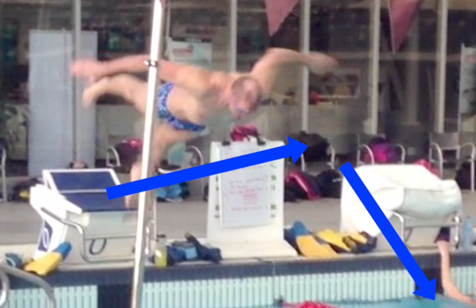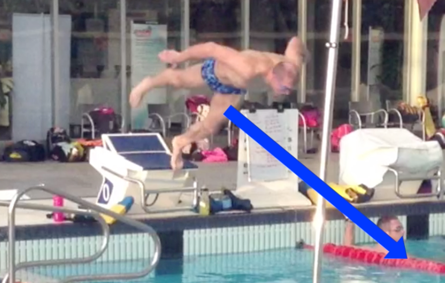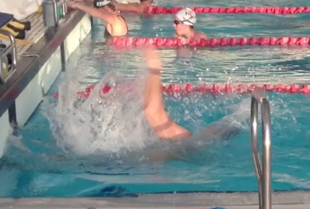On the weekend one of the swimmers that I coach, Stuart Moffat, broke the world record for the 50 breaststroke short course in the 50-54 years age group. The world record was 30.61. Stu went 30.48 with a great swim. (**Update** Due to a technicality at the meet itself it can’t be counted as a WR but the lessons in this video still apply).
I want to talk about a couple of things that we did to help him get down to 30.48. A few weeks earlier he swum a 31.4. We had almost a second to find in a couple of weeks time. These are some of the things that we worked on to help him get down to that 30.48.
I go in to more in depth in Effortless Swimming Membership Program which is our online coaching forum. If you’re a member there, you can log in and go and check that out.
The Dive
Previously, Stu was diving out forward and then angling his body down a bit too much. With the new starting blocks where you’ve got a trackpad, you can dive straight into the water. The fastest way is to dive and go straight into the water rather than diving out and then angling down. The way that we changed Stu’s start was to move the trackpad from level 4 to level 3. It made his legs a little bit closer together but this worked for Stu. It won’t work for everyone. It depends on your flexibility, your height, what kind of start you’ve got, all those sorts of things. But with Stu we moved the trackpad from 4 to 3 and that helped him improve his angle into the water.
The Entry
We wanted to make sure that his legs were following his body into the water. A few times, his legs weren’t following his body all the way in which meant that he wasn’t quite as streamlined as he entered the water. This slowed him down and he wasn’t getting the distance off the start that he was aiming for. With the distance off the start, we were aiming to get as close to 15 meters as we could.


Split Pull
He had to keep a bit more depth after the split pull in order to get extra distance before taking the first stroke. He was coming up a little bit shallow after his split pull. The way we kept his depth was by pushing down with his chest.
If you push down on your chest just a little bit, then that will help you stay a little bit deeper off the split pull.
Height
With Stu’s stroke we needed to get a little bit more height with his body. Because he’s a strong guy, he can muscle his way through the water, but in order to reduce the resistance that his body creates we had to get a little bit higher out of the water.
We practiced a couple of drills to help with this. Some of those drills are in the Effortless Breaststroke Program.

Head Alignment
If you’re looking up when you pull and you’re moving your head out of alignment with the upper half of your body, it’s not going to be as efficient as possible. In breaststroke, you want to keep your head in line with your upper body. We made sure that that was the focus when he was swimming his breaststroke.
Hitting The Turn On A Full Stroke
Ideally, we want to finish on a full stroke so that we can hit the wall and come straight back out. One of the ways to avoid finishing short or needing to glide into the wall is when you get to the 5 meter mark, as best as you can, get a sense of where you are. Then you can shorten or lengthen your strokes so that you hit the wall on a full stroke. Use those flags to get a sense of where you are and what you need to do for your stroke. Do you need to shorten them or lengthen them in order to finish on a full stroke into the wall?
Don’t Wave To The Crowd When You Turn
A fast and tight turn is key. When you hit the wall, you don’t want to bring your arm all the way around so that it’s swinging around and making it a slow turn. You want to make it fast. Once you hit the wall, bring one of your arms back close to your ribs. Bring your other hand around like you’re answering the phone. Make it a small movement. That was one of the focuses with Stu’s turn.


Do What Matters
When you’re doing a 50, you need to nail the start and turn if it’s short course because it’s such a quick race.
I have gone into more detail in Effortless Swimming Membership Program and talked about some of the extra things that we did. If you’re member you can log in there and check that out.
If you’re a breaststroker I hope this helps with your focus in your training.



Awsome swim Stuart,
I was there that day and you have inspired me to train that extra bit harder.
Excellent, Brenton. Just in time! I believe Stu is coming to Canberra and I look forward to watching him. Maybe you are also coming. I am dangerously close to the 50 and100 WR’s so I might get some inspiration. At 76, I will not be able to do what he does but let’s try. Tony